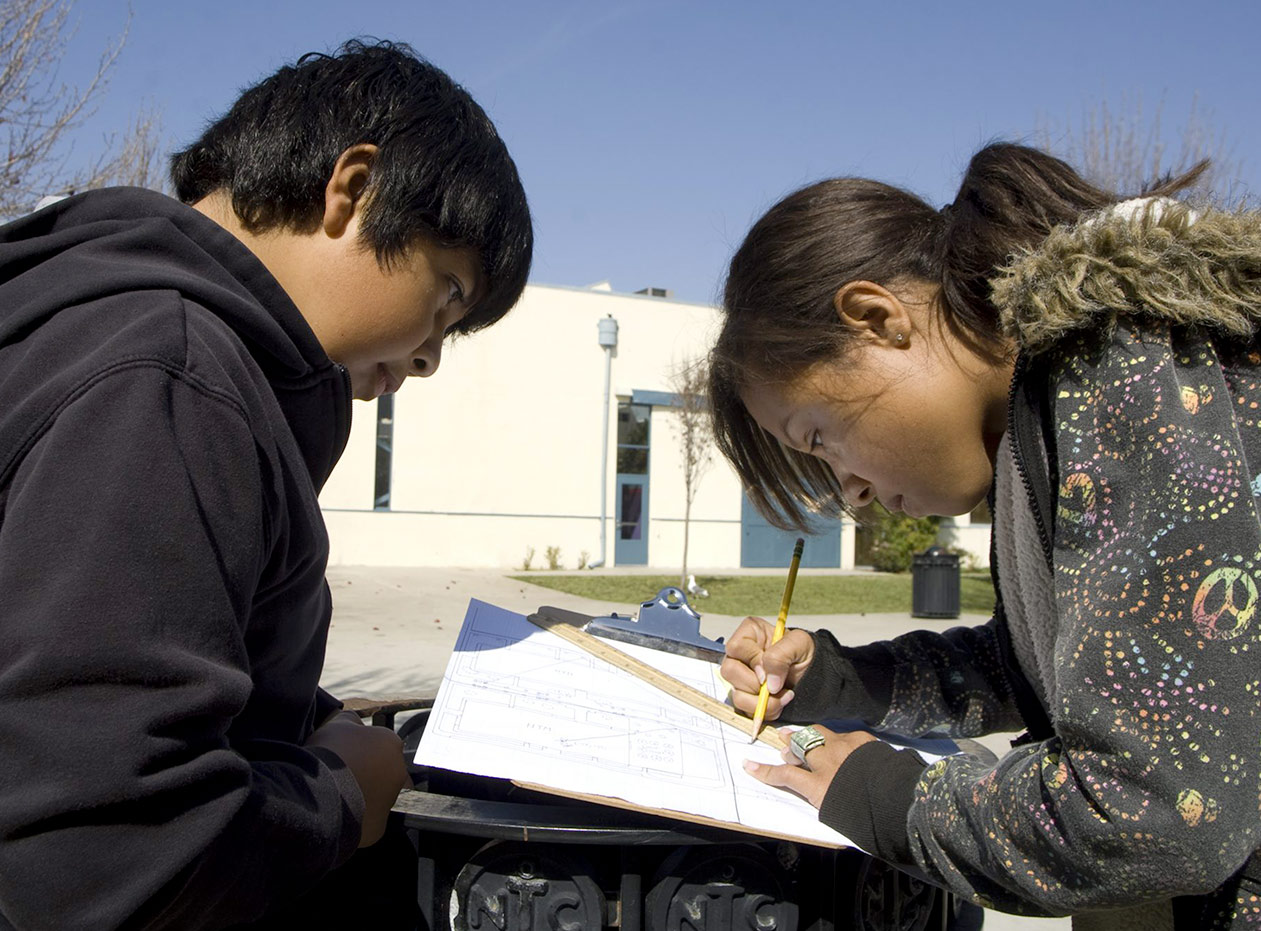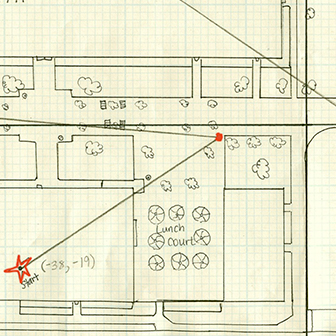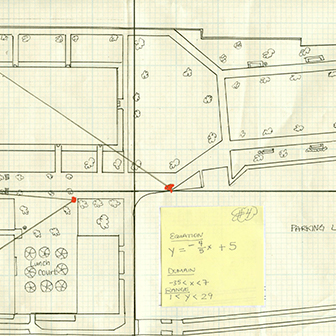PROJECT DESCRIPTION
INSTRUCTORS
SCHOOL SITE
LEVEL
SUBJECTS

Inspiration:
Initially, I imagined a traditional geocaching activity whereby students might use electronic GPS units to calculate latitude and longitude of specific locations, and from this data they could create linear equations which would define the line that intersects these points. This idea was hampered by two main factors: the prohibitively expensive cost of supplying my class with decent quality GPS units and the logistics of supervising the hunt they would create. I scaled back the idea to fit the school and came up with the idea of creating a treasure hunt using the blue prints of the school. Students would be required to define ten stopping points within our school leading to the treasure. These points would be defined using a Cartesian coordinate system (X,Y) and connected using straight lines. It was not your typical treasure map, but the students were excited nonetheless.
My students had a solid understanding of integers and rational numbers, as well as the ability solve single step algebra equations, so I felt they were now ready to connect some dots… literally. This project was designed to teach, practice, and assess students’ knowledge of the Cartesian coordinate system, as well as their ability to create linear equations from lines and draw lines based on linear equations. To teach these skills, I projected a transparent grid onto a dry erase board, and we drew out imaginary treasure maps in classic pirate style on the white board. We discussed plotting points and the importance of having a common means for expressing location using the (x,y) coordinate system. We illustrated routes between two locations with a straight line, and we explored slope by comparing the steepness of lines for different routes. Students were able to practice what they learned by creating their own map, in which they needed to be able to write equations from the routes they drew as straight lines. The map they created would serve to assess their ability to translate lines to equations. Once they traded maps with another group, I could assess their ability to translate equations back to lines in order to create a route and eventually uncover the treasure.

In total, each group wrote ten equations to direct treasure hunters from one point to another. Students chose the best method to write the equation for each line. Some used the line they drew to find the slope by tracing the rise and run with their finger, and then moved on to find the y-intercept by noticing where the line crossed the Y-axis. From there, it was as simple as plugging in the slope and y-intercept into the slope-intercept form for a linear equation, y = mx + b. Other groups chose to take a more algebraic approach, in which they used two points on the line to determine the slope, from the equation m = y2-y1/x2-x1 , and then used the point-slope formula, y – y1 – m (x – x1), to complete the equation. In order to express only a particular line segment that was their route, students bound the line using the domain and range. Once the linear equations, domains, and ranges for each route were found, students recorded the information onto the index cards that would become the clues for their treasure hunt.
One of the challenges that students encountered in crafting their maps was that not all lines crossed the y-axis in a place that was visible on the blueprint of the school. This initially frustrated some students, many of whom had really only paid attention to the slope-intercept approach for writing equations. I hadn’t planned on this complication, but it proved to be a great opportunity to introduce alternative methods for writing equations. Students willingly engaged in the more labor intensive process of writing linear equations using the coordinates of two points because they wanted their maps to work.


Once their maps were drawn and their note cards complete, the hunt was on! Students traded in the role of map creators for the challenge of being treasure hunters. Each group set off on the hunt created by a group of their peers. They exchanged note cards with the first equation and raced to locate the initial stopping point on the treasure map. A competitive spirit took hold as students rushed to translate the equation clue into a line, draw the line onto a photocopied map of the school, and then run to the first stopping point. If their calculations were correct, teams found a new note card at each stopping point with a new set of clues. After making their way through all ten equations and all ten stopping points, teams reached their treasure.
For a first time project, our mathematical treasure hunt was a great success! Students were motivated and engaged, they learned new algebraic concepts, and they gained a ton of practice in translating equations into graphs and vice versa without even realizing that what they were doing was work! However, once we moved into the hunt itself, I realized that I’d made an error in my planning. I’d been so excited to get the students into the hunt that I’d neglected to give the planning groups time to try out their own maps to check for accuracy. As a result, they unwittingly passed off less than perfect clues, which resulted in hunting groups being unable to find their treasure. Students quickly got frustrated and began to point fingers. I thought I emphasized how important it was that their information be accurate; in retrospect, I don’t think any amount of emphasis could have made this point more clear. What my students needed was to see for themselves how accurate– or inaccurate– their equations were. I’ll make sure to adjust the plan to allow for more practice next time.
Playing to Win
Student Work Examples


